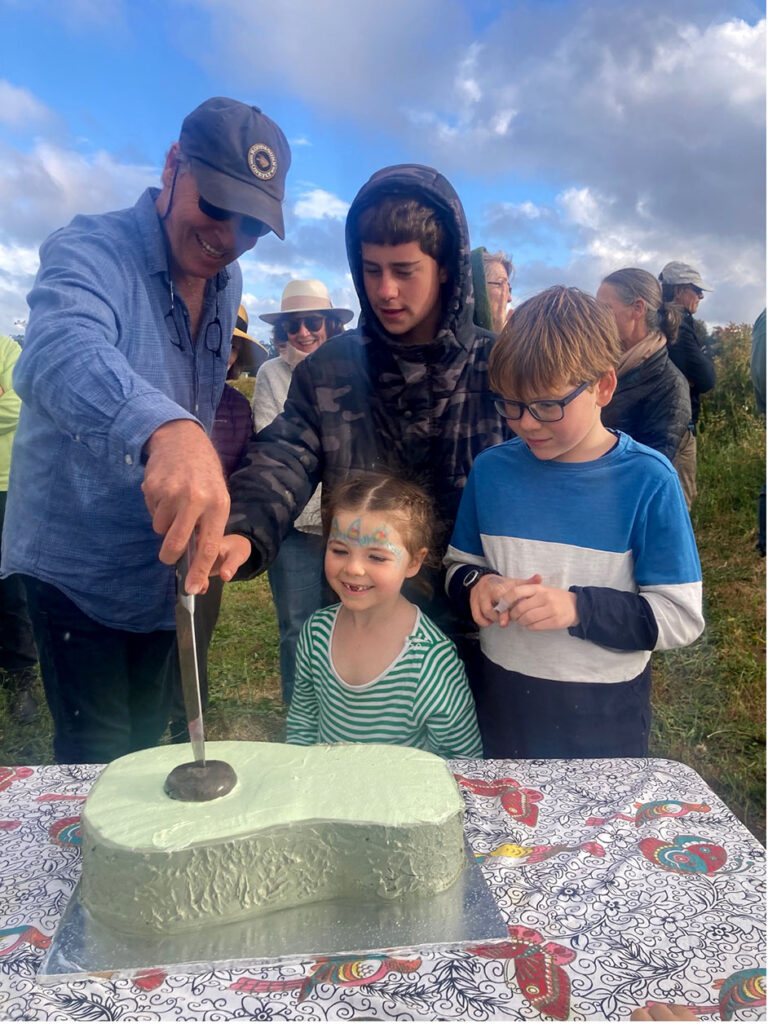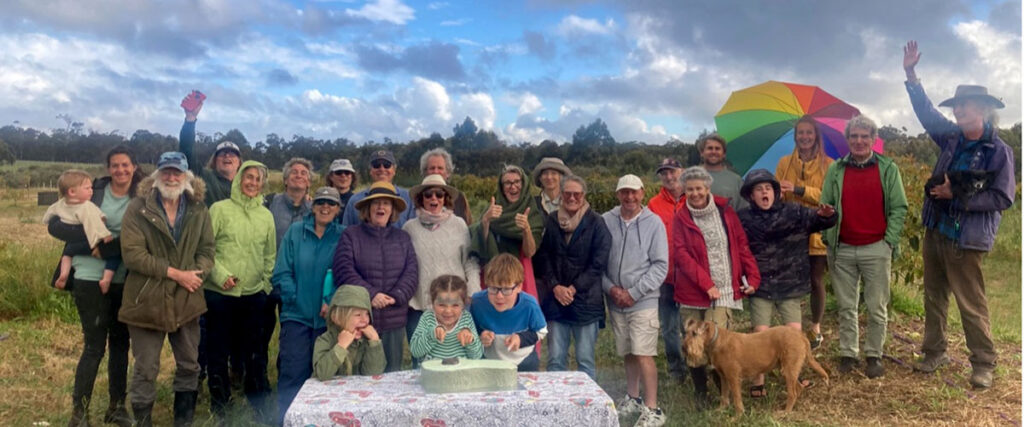We enjoyed another milestone in October when we held a little community event to hand over several rows of avocado trees to clusters 1A, 1B and 1C from the orchard in the wastewater irrigation zone.
It was a fun and informative couple of hours where all who attended received a summary of the irrigation and the simple maintenance, feeding and mulching requirements of the avocado tree (and an amazing avocado cake).
The avocado orchard consists of 28 rows and 761 trees. The rows have been divided up in a manner that enables each cluster to have two rows, which equates to three trees per lot / home. We’ve installed signs identifying which rows belong to each cluster.
If each cluster weeds, feeds and mulches their trees a few times a year, they will be amazed at how quickly they will grow and flourish. Mark will undertake bi-annual leaf analysis to make sure the trees are getting all the right nutrients and trace elements, which we will continue to apply through organic folia spray. We have a five-year-old tree at home that gets this level of TLC, which we have only ever fed with goat manure and tree mulch. This tree (pictured) produced around 200 avocados last season and has many more on it this season.

The wastewater treatment plant is now treating around 12,000 litres per day (almost bang on 100L/person we expected) which is irrigated onto the avocado orchard. At this point we don’t have enough treated wastewater to satisfy the trees water requirements, so we are diluting with additional dam water. However, as there are around another 40 homes under construction, it won’t be long before that volume increases to 20,000L/day.
Tony, the wastewater treatment plant owner/manager, tells me the treated water is so clean he’d be happy to bath in it! However, following Dept of Health (DoH) requirements, it’s micro-dosed with chlorine before being irrigated. Tony is hoping to gain DoH approval to convert the chlorine dosing to ozone treatment in the future, which will be greatmas ozone kills pathogens and soil microbes and plants love ozone and dislike chlorine.
It’s very exciting to be getting to this stage of the project, to be handing over areas that we’ve been managing for years, and getting our community involved in creating healthy, productive, landscapes, particularly when we’re watering them from our recycled wastewater, as it doesn’t get more sustainable than that.

